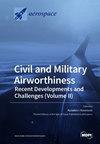考虑级联故障的集成航空电子系统故障传播行为分析与评估
IF 2.1
3区 工程技术
Q2 ENGINEERING, AEROSPACE
引用次数: 0
摘要
随着航空电子系统综合化、模块化和集成化程度的提高,系统之间以及子系统内部设备之间的相互联系变得越来越复杂,给集成航空电子系统的安全性和可靠性带来了风险。针对集成航电系统中功能级联故障导致的故障传播风险,本文提出了一种离散动态故障传播分析方法,并将其应用于全电制动系统以评估其可行性。首先,总结了分布式集成模块化航空电子系统的架构特点。随后,描述了构建的系统层模型,建立了功能-资源分层架构。随后,结合 SAE ARP 4761A 中的级联故障分析方法,综合考虑系统属性与功能之间的耦合特性,分析了离散动态系统中的级联故障传播行为。这种方法有助于开发基于离散动态系统的 DIMA 级联故障传播模型。最后,以 DIMA 架构下的全电动制动系统为例,确定了关键核心处理模块和易失效功能。研究结果表明,在该系统中,CPM2 和 CPM6 特别容易受到故障传播的影响,而自动制动功能尤其脆弱。数据显示,系统运行 2×104 小时后,故障率明显上升。在达到这个临界值之前进行维护可以进一步降低风险。这种做法符合现行的国际飞机维护时间规定。本文提出的方法可用于 DIMA 资源分配的早期阶段,以提高安全性并支持 DIMA 设计。本文章由计算机程序翻译,如有差异,请以英文原文为准。
Analysis and Evaluation of Fault Propagation Behavior in Integrated Avionics Systems Considering Cascading Failures
As the synthesis, modularization, and integration of avionics systems increase, the interconnections between systems and equipment within subsystems become increasingly complex, posing risks to the safety and reliability of the integrated avionics system. To address the risk of fault propagation due to functional cascade failures in integrated avionics systems, this paper proposes a discrete dynamic fault propagation analysis method, which was applied to an all-electric braking system to assess its feasibility. First, the architectural features of the Distributed Integrated Modular Avionics system are summarized. Subsequently, the constructed system layer model is described, establishing the function–resource hierarchical architecture. Subsequently, the behavior of cascading failure propagation in discrete dynamic systems is analyzed by integrating the cascading failure analysis method from SAE ARP 4761A and considering the coupling characteristics between system properties and functions comprehensively. This approach facilitates the development of a cascading failure propagation model for DIMA based on discrete dynamic systems. Finally, by using the all-electric braking system under DIMA architecture as a case study, key Core Processing Modules and failure-prone functions are identified. The findings reveal that within this system, CPM2 and CPM6 are particularly susceptible to failure propagation, and the automatic brake function is notably vulnerable. Data show that the system’s failure rate escalates markedly after 2×104 h of operation. Performing maintenance before reaching this threshold can further mitigate risks. This practice aligns with current international aircraft maintenance time regulations. The method proposed in this paper can be applied early in the allocation of DIMA resources to enhance security and support DIMA design.
求助全文
通过发布文献求助,成功后即可免费获取论文全文。
去求助
来源期刊

Aerospace
ENGINEERING, AEROSPACE-
CiteScore
3.40
自引率
23.10%
发文量
661
审稿时长
6 weeks
期刊介绍:
Aerospace is a multidisciplinary science inviting submissions on, but not limited to, the following subject areas: aerodynamics computational fluid dynamics fluid-structure interaction flight mechanics plasmas research instrumentation test facilities environment material science structural analysis thermophysics and heat transfer thermal-structure interaction aeroacoustics optics electromagnetism and radar propulsion power generation and conversion fuels and propellants combustion multidisciplinary design optimization software engineering data analysis signal and image processing artificial intelligence aerospace vehicles'' operation, control and maintenance risk and reliability human factors human-automation interaction airline operations and management air traffic management airport design meteorology space exploration multi-physics interaction.
 求助内容:
求助内容: 应助结果提醒方式:
应助结果提醒方式:


